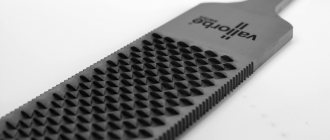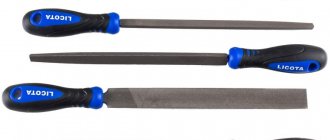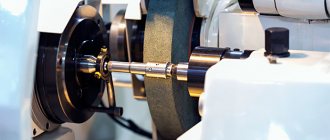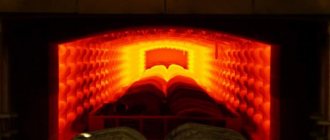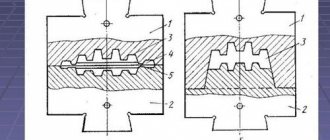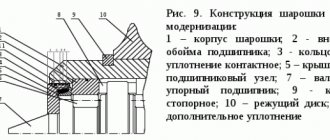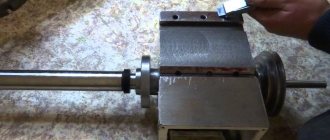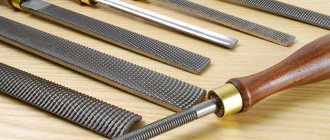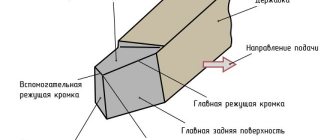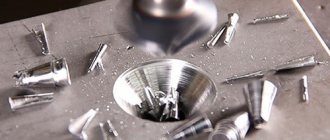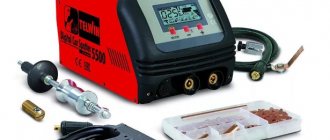Home Blog Rasp - what are the similarities and differences from a file?
Roughing of many products is carried out using special tools. The classic craftsman's set is a combination of a rasp and a file. Both of these devices have their own specific characteristics. In most cases, they are used when working with metal and wooden surfaces.
A rasp is a type of file with large notches. It is used to pre-treat materials including wood, plastic, leather or soft metal. As a rule, in such cases a finishing tool cannot be used. This is due to the fact that the created recesses are quickly clogged with chips, so it will not be possible to obtain a flat surface in this way.
Wood rasp
Despite advances in science and technology, wood is considered one of the most common materials today. Its processing can be carried out using a variety of tools, including a rasp. When considering what a rasp is, we note the following points:
- The most common design has a flat working part with a blunt nose. It is used to remove material from flat and other surfaces.
- The notch is made in large form. This ensures the formation of large chips, which are quite easy to remove from the surface. There is a special groove in front of each tooth, which simplifies the process of removing chips.
- The tool is divided into the main working part and handles. In some cases, the handle can be removed; a variety of materials are used in manufacturing.
In general, we can say that the rasp file is designed for rough work. After its application, finishing and other similar operations are also required. The degree of roughness of the treated surface is very high.
Features and scope of application of the rasp
In carpentry, a separate type of file called a wood rasp is often used. At first glance, these two tools are similar, but there are serious differences between them. The fact is that the notch of the rasp is made in the form of separate burrs of different shapes. Thanks to this configuration, the tool does not clog and can quickly process a large surface.
Note! A rasp is indispensable in cases where it is impractical to use other methods of surface treatment (saw, plane).
For example, you need to remove a few millimeters from the end surface of a small board. The saw will most likely ruin the workpiece, it is impossible to use a plane due to the short length of the board, a simple file will take a long time to work, and besides, it will constantly become clogged with sawdust.
Types of rasps
There are quite a large number of different types of such instruments. Classification is carried out according to various criteria, the most important being the type of working part:
- Flat rasps are much more common than other options and are usually included in standard sets. A similar working surface can be used for finishing flat surfaces; the tip can be tapered or straight.
- There is also a semicircular rasp. In most cases, a tool with a similar surface is used for processing semicircular workpieces. The degree of rounding of the main part of the product may vary significantly.
- To work with products that have an unusual shape, versions with a triangular or other complex cross-section are often used. The special shape allows material to be removed from corners and other complex geometries.
There is a roughing rasp with a different working surface, which is made using structural or tool steel. The type of alloy used largely determines the performance characteristics of the product.
Types of files and their purpose
Types of files by class and shape determine the main scope of application.
Class 1 includes tools with a notch numbered from 0 to 1.
This is a rough file; its main task is rough surface finishing.
The second class includes tools with abrasives No. 2 and 3.
This is a less coarse file, it is called a personal file, and is used primarily for finishing, because... it leaves a smoother surface.
Tools of classes 3,4,5 and 6 have a notch of 4 and 5 numbers.
They are better known as “velvet” or jewelry files and are used for finishing.
Types of files by shape
Classification by form subdivides the scope of application in more detail.
1. Flat, blunt-nosed files are considered universal tools because... They are designed for working on metal and wood.
They can easily handle flat and convex surfaces. They have a single notch on one of the side faces.
2. Flat pointed blades are used for processing external or internal flat surfaces; they are also used for sawing slots and grooves.
3. Square products have a sharp nose; they are used for sawing square and rectangular holes and narrowed surfaces.
4. The triangular shape is available in two versions - for layer-by-layer cutting of materials, processing internal corners of various shapes, triangular holes for filing small grooves and wedge-shaped grooves.
This type is also used for sharpening wood saws, which is why they are also called hacksaws.
5. Round shape - this type, like the triangular one, has two different subtypes.
For processing round grooves, holes, layer-by-layer sawing and for sharpening wood saws and saw chains.
6. The semicircular type classifies the tool as a universal one, as it combines the advantages of flat and round files.
Ideally performs processing of spherical and flat surfaces, has a pointed nose.
7. The rhombic shape makes it possible to effectively process materials with complex surface configurations, including working with gears, sprockets, wheels, and disks.
Files intended for specialized operations are called special purpose tools, these include diamond coatings and other cutting surfaces of higher hardness intended for non-ferrous alloys, metal, tiles or ceramics and other materials.
Types and sizes of notches
The nature of the notch determines the main types of files.
The profile and size of a file's teeth depend on the machine used to apply the cutting surface.
Typically used for production:
— saw-cutting machines with chisels; — milling machines; — grinding machines with special wheels; — gear cutting and broaching machines.
Regardless of the production method, all teeth have specified parameters for the angle of location, sharpening and cutting.
The more notches per 1 cm of working area, the smaller the notch teeth.
The ratio of the height to the pitch of the main notch must be at least 0.5.
File material
According to Russian and international standards, files are made from carbon tool steel.
These include the most common brands:
- U 10,12, 13; — At 10, 12, 13 A; — ShKh15 UA; — 13X and their foreign analogues.
What should a set of rasps consist of?
It is worth considering that for high-quality work, a whole set of rasps is required. The classic set is represented by a combination of the following options:
- Flat.
- Round.
- Semicircular.
Classification is also carried out according to the type of notches applied into two classes, only if both are available it is possible to carry out work with high accuracy. The semicircular rasp of the second number has more notches on the surface, which ensures higher efficiency in use.
Most often, a metal rod is made using steel grade U7, in some cases U8 and U10. By increasing the hardness and sharpness of the cutting edge, the degree of engagement with the surface being processed significantly increases at the time of processing.
Only two types of tools are produced abroad: regular and grooved. The teeth of such designs, as a rule, have standard sizes.
Brief characteristics of rasps
As previously noted, each type of rasp is characterized by its own specific properties. The most common version is a flat version, designed for processing concave surfaces. The key features are the following:
- The purpose is for rough processing of wood or various non-ferrous metals.
- Modern versions are equipped with comfortable handles, which are available in two materials. Often a special hole is created for hanging.
- The main working part is made of tool steel, the composition of which eliminates the possibility of severe wear.
The semicircular rasp is very common. It is also often equipped with an ergonomic two-component handle. This ensures the most comfortable conditions for convenient work. This shape of the working part makes it possible to process various round holes and remove unevenness in hard materials. Such tools are often used to perform almost all plumbing jobs.
The semicircular shape allows processing not only concave surfaces, but also flat ones.
The created handle is covered with a special coating, which eliminates the possibility of hands slipping. The working part is represented by a combination of a semicircular and flat surface.
A rasp cut is represented by a cutting edge that removes a layer of material from the surface. Do not forget that depending on the intensity of use, it can quickly wear out.
Types of files
The industry offers various types of this tool, most of which are universal and can be used with equal success for fine processing of wood and metal. The tools are classified according to the type of cutting part:
- with a single notch;
- with double cross notch;
- for wood with an arc notch;
- with rasp notch;
- stamped file.
Separately, it is worth noting a tool designed for delicate work with miniature parts. A wood file is the same file, but smaller in size, which makes it indispensable for making small crafts from wood and other soft materials. For the same purposes, a type of needle file is used - riffles. Their working part is curved, which significantly facilitates the production of small parts of complex shapes.
All files, regardless of their purpose, are classified according to the cross-section of the working part. The most popular tool is the following profile:
- flat (rectangular);
- square and round section;
- triangular;
- semicircular;
- rhombic.
The shape of the tool, size, depth and type of notch are selected depending on the type of work performed. The rougher the processing, the larger the notch should be and the larger its pitch. From this we can conclude that a home workshop should have not just one file, but a whole set of similar tools with different characteristics.
Areas of use
The product in question has become very widespread. In some cases, the rasp is used as an attachment, in others as a separate tool. The feature is as follows:
- Rough wood processing.
- Processing of metals of varying hardness.
As a rule, the product in question is found in locksmith shops and garages. Such a tool allows for preliminary surface treatment, removal of serious irregularities and various defects.
How to use a rasp correctly?
Only with proper use can you extend its service life and eliminate the possibility of serious defects. The small file in question can be used taking into account the recommendations below:
- In order to increase the convenience of work, the workpiece is secured in a vice or using a clamp.
- At the time of work, the elbows are located on the jaws of the vice, hold the handle with your right hand, and hold the end slightly with your left. Due to this distribution of effort, the efficiency of the work performed increases.
- To remove the required layer of material, you need to carry the product along the entire length of the working part. If certain unevenness is being leveled, a short stroke is performed.
- In most cases, a flat version of the tool is used. If the surface layer of wood is being removed, it is recommended to move the rasp diagonally relative to the grain. It is worth considering that after completing this stage, serious marks appear on the surface, which are removed during subsequent finishing.
- At the first stage, you need to press hard on the tool, as this significantly increases productivity. At the end of the procedure, it is recommended to reduce the pressure force, due to which a higher quality surface can be obtained.
In many ways, the principle of use of the product depends on the specific task at hand. Only after gaining the required experience can you obtain a high-quality surface by carrying out the appropriate processing.
Tool care tips
Only with proper care of the tool can you significantly extend its service life. Among the features of care, we note the following:
- At the time of work, there is a possibility that the recesses and notches will become clogged with material. This is manifested by the fact that when performing movements, the proper layer of material is no longer removed from the surface, and the instrument begins to move without significant effort. Cleaning can be done by lightly hitting the surface. You need to be careful when doing this, as too much force can cause damage to the tool.
- If the notches become clogged with chips, it is possible to clean them using a standard brush.
- Before using the rasp directly, it is prohibited to place it on metal surfaces. Such long-term operation causes rapid wear of the cutting edge.
- Contact of the tool with various lubricants is not allowed. Even a small amount of such a substance can cause a significant reduction in the performance of the product.
Upon completion of work, you should check the condition of the tool. The appearance of minor defects indicates that the tool will have to be replaced in the near future, as it will lose its basic performance characteristics.
Subtleties of work
Finding out what a rasp is used for and learning how to work with it, you should gradually learn specialized subtleties that allow you to achieve much better results.
- Having already completed work on the part, it is necessary to ease the pressure on the rasp so that the work turns out softer and more delicate. The fact is that the pressure force affects the depth of the recesses left by the tool on the surface.
- When working with wood, wood dust always remains on the tool. It needs to be brushed off. It is also recommended to fan the surface being treated as often as possible. This way it will be much clearer how the work is going, what needs to be faked or corrected, where you can use the rasp one more time.
- If you have to work on a thin or too small area, it is better to take not an ordinary rasp, which is useless here, but a miniature corrugated one. With its help you can easily reach the most difficult places.
The main differences between a rasp and a file
A rasp is a type of file. Features are as follows:
- The rasp is intended for rough processing; after its use, finishing files (with finer notches).
- Due to the large cutting edge, productivity is significantly increased. In other words, this tool takes much less time to remove material.
- If you pay attention to how the notches are located, the differences are almost immediately evident. In the case of a rough instrument, they look like large cells arranged in a checkerboard pattern.
- The product in question is designed to transmit high force. That is why the main part is more massive and is made using a thicker layer of material.
The file is characterized by the fact that it allows you to obtain a better quality surface in comparison with the case of using a rasp.
In most cases, the technological map provides for a combination of several similar tools, thereby increasing the productivity and quality of the resulting product. That is why the set is often represented by a combination of several types of products, which can have different shapes.
Teeth size
In addition to the tooth size, products of this class differ from each other in the cutting density.
For rough surface treatment, products with large notches are used. It is called No. 1; there are from 5 to 15 teeth per centimeter. Its use makes it possible to remove a fairly thick layer of material in one pass, especially from soft materials; I call files of this type wrangler files.
Read also: ✅ Ammonium sulfate (ammonium sulfate)
Files No. 2 have from 14 to 25 grooves per centimeter of surface. This is perhaps the most popular type of this instrument. In fact, this file is most often used in practice.
Indeed, it can be used to process almost any material. But there is one subtlety: when working with soft metals or wood, after a fairly short time the notch will be clogged with processing waste. This is why it is necessary to clean the work surface with a wire brush.
Products with notches from 26 to 80 grooves per 1 centimeter are used for final surface treatment. After proper processing, there are practically no traces left on the surface.
